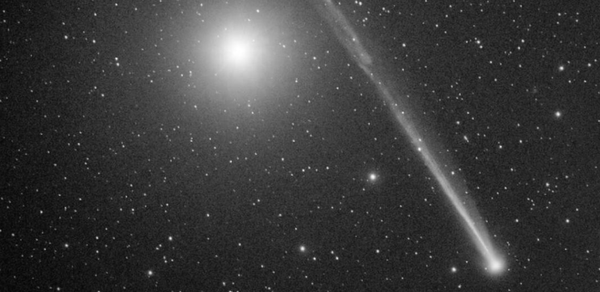C/2025 R2 (SWAN) vs. 3I/ATLAS: Two Cosmic Wanderers Stealing the 2025 Spotlight – A Head-to-Head Comparison
As autumn skies awaken in 2025, stargazers are treated to a rare double feature: two extraordinary comets gracing our celestial theater. Comet C/2025 R2 (SWAN), the fiery newcomer discovered just weeks ago, and 3I/ATLAS, the interstellar intruder that's been barreling through our Solar System since summer. If you're searching for C/2025 R2 SWAN vs 3I/ATLAS comparison, interstellar comet 3I/ATLAS brightness and visibility, or SWAN comet tail facts, this in-depth showdown has you covered. From origins and orbits to observation tips and scientific intrigue, we'll pit these icy travelers against each other to see which one – if either – will etch itself into your night-sky memories.
These comets couldn't be more different: one a homegrown Oort Cloud relic, the other an alien escapee from another star system. Yet both are poised for peak drama in October and November, overlapping with meteor showers and planetary alignments. Let's break it down.
Discovery: Serendipity Meets Systematic Surveillance
C/2025 R2 (SWAN) burst into view like a plot twist in a sci-fi epic. On September 11, 2025, Ukrainian amateur astronomer Vladimir Bezugly spotted it in images from the Solar Wind Anisotropies (SWAN) camera on NASA's SOHO spacecraft – a tool designed for solar wind studies, not comet hunting. At magnitude 7.5 with a 2-degree tail, it was already a stunner, earning its official IAU nod as C/2025 R2 (SWAN) by September 15. This marks the 20th SWAN comet, but Bezugly called it "one of the brightest comet discoveries ever made on SWAN imagery." Precovery images pushed its first sighting back to August 13, revealing rapid brightening from magnitude 11 to 8 due to the Holetschek effect – the comet's glow-up hidden by solar glare until post-perihelion.
In contrast, 3I/ATLAS was no accident – it was caught in the crosshairs of precision monitoring. Discovered on July 1, 2025, by the ATLAS (Asteroid Terrestrial-impact Last Alert System) survey telescope in Chile, it started as a faint magnitude 17 speck 4.5 AU from the Sun. By July 2, orbital math confirmed its interstellar status, dubbing it the third confirmed visitor from beyond our Solar System (after 1I/ʻOumuamua in 2017 and 2I/Borisov in 2019). Precovery data from ATLAS and Palomar's Zwicky Transient Facility extended observations to June 14, showing early cometary activity possibly as far back as May 7 via NASA's TESS satellite. Unlike SWAN's surprise party, 3I/ATLAS's debut was a calculated alert, highlighting ATLAS's role in planetary defense.
Winner: Tie – SWAN for the thrill of the unexpected, 3I/ATLAS for the high-tech hunt.
Origins and Orbits: Local vs. Extraterrestrial Journeys
These comets' paths tell tales of their birthplaces. C/2025 R2 (SWAN) hails from our own backyard – the Oort Cloud, a distant shell of icy leftovers from the Solar System's formation 4.6 billion years ago. Its orbital eccentricity of 0.996 makes it a long-period comet, looping the Sun every 22,000+ years (though some estimates suggest as "short" as 1,400 years). Perihelion hit on September 12, 2025, at 0.5 AU – scorching hot, unleashing a 5-degree tail of gas and dust. Earth gets closest on October 20 at 0.26 AU, but it'll swing back around in millennia.
3I/ATLAS, however, is the ultimate road tripper: formed around another star, ejected into interstellar space for millions (or billions) of years, arriving from Sagittarius near the Milky Way's core. Its hyperbolic orbit boasts an eccentricity of 6.141 – the highest of any interstellar object – with a speed of ~210,000 km/h, ensuring a one-way ticket out. Perihelion awaits on October 29 at 1.36 AU (inside Mars' orbit), with closest Earth approach in December at ~1.6 AU minimum. No return voyage – it's gone forever after fading into the void.
| Orbital Showdown: C/2025 R2 (SWAN) vs. 3I/ATLAS | C/2025 R2 (SWAN) | 3I/ATLAS |
|---|---|---|
| Origin | Oort Cloud (Solar System) | Interstellar (another star system) |
| Eccentricity | 0.996 (long-period) | 6.141 (hyperbolic) |
| Orbital Period | ~22,000 years | One-way pass |
| Perihelion Date/Distance | Sept. 12, 2025 / 0.5 AU | Oct. 29, 2025 / 1.36 AU |
| Earth Closest Approach | Oct. 20, 2025 / 0.26 AU | Dec. 2025 / ~1.6 AU min. |
| Inclination to Ecliptic | Moderate | ~5° (near-planar) |
Winner: 3I/ATLAS – For the sheer audacity of crossing light-years to say hello.
Brightness and Appearance: Glow-Up Potential
SWAN is the show-off so far. Discovered at magnitude 7.3-7.5 with a greenish coma from diatomic carbon and a tail up to 5° (10 full Moons wide), it's already binocular-visible near Mars in Virgo. Forecasts peg it at magnitude 5.8-6 by mid-October, teasing naked-eye views from dark sites (though its diffuse coma might dim it to ~4.5 needed for easy spotting). Outbursts could brighten it further, but fragmentation risks lurk post-perihelion.
3I/ATLAS plays hard to get. Starting at magnitude 17, it's climbed to 12-14 by September, with a teardrop dust cocoon around its icy nucleus and hints of a growing tail – even showing a surprising green hue in early September spectra. Peak predictions hit magnitude 12 in late October-November, but it's telescope-only – no naked-eye hopes, and solar conjunction hides it from Earth views September-November. Steady activity so far, but perihelion could trigger outbursts like Borisov's fragmentation.
Winner: SWAN – Brighter and more accessible for backyard astronomers.
Visibility and Skywatching: Where and How to Spot Them
On September 25, SWAN rules the evening west in Virgo, 30° from the Sun – binoculars (50mm+) reveal its tail near Spica; Southern Hemisphere gets the best perch, but Northern latitudes improve by October. Apps like Stellarium or Star Walk pinpoint it; watch for a potential "SWANids" meteor shower October 4-6 as Earth crosses its stream.
3I/ATLAS is evening-visible now in the south (near Sagittarius), but fading behind the Sun soon – re-emerges pre-dawn November in Virgo/Leo at magnitude 12+. Telescope essential; both hemispheres work due to low inclination. Spacecraft like Mars Express, SOHO, and Juice may snag bonus views at Mars and beyond.
Pro Tip: October 20-21 overlaps SWAN's Earth approach with C/2025 A6 (Lemmon)'s – two comets in one night, plus Orionids meteors!
Winner: SWAN – Easier access, but 3I/ATLAS for the exotic thrill.
Scientific Significance: What They Reveal About the Cosmos
SWAN is a Solar System snapshot: its outbursts and potential meteors probe Oort Cloud dynamics and water delivery to ancient Earth. As a "regular" comet (eccentricity ~1), it underscores SOHO's citizen-science legacy.
3I/ATLAS is cosmic espionage: its chemistry (CO2 fog, possible dicarbon) hints at alien stellar nurseries, vertical galactic motion suggests thick-disk origins, and high speed/eccentricity challenges interstellar ejection models. JWST's August spectra already tease differences from Solar System comets – a window into exoplanet formation.
Winner: 3I/ATLAS – It rewrites our place in the galaxy.
The Verdict: Which Comet Wins 2025's Crown?
C/2025 R2 (SWAN) dazzles with immediate beauty and accessibility – the comet for your Instagram feed. 3I/ATLAS captivates with profound mystery – the one that makes you ponder the stars' secrets. In this interstellar vs. local rivalry, SWAN takes the visibility trophy, but 3I/ATLAS steals the show for sheer wonder. With both active through fall, 2025 is a comet-lover's dream.
Dust off your binoculars for SWAN now, and queue your telescope for 3I/ATLAS's November encore. For live ephemerides, check TheSkyLive or EarthSky. What's your pick? Drop your thoughts below.
Clear skies, cosmic chasers!



